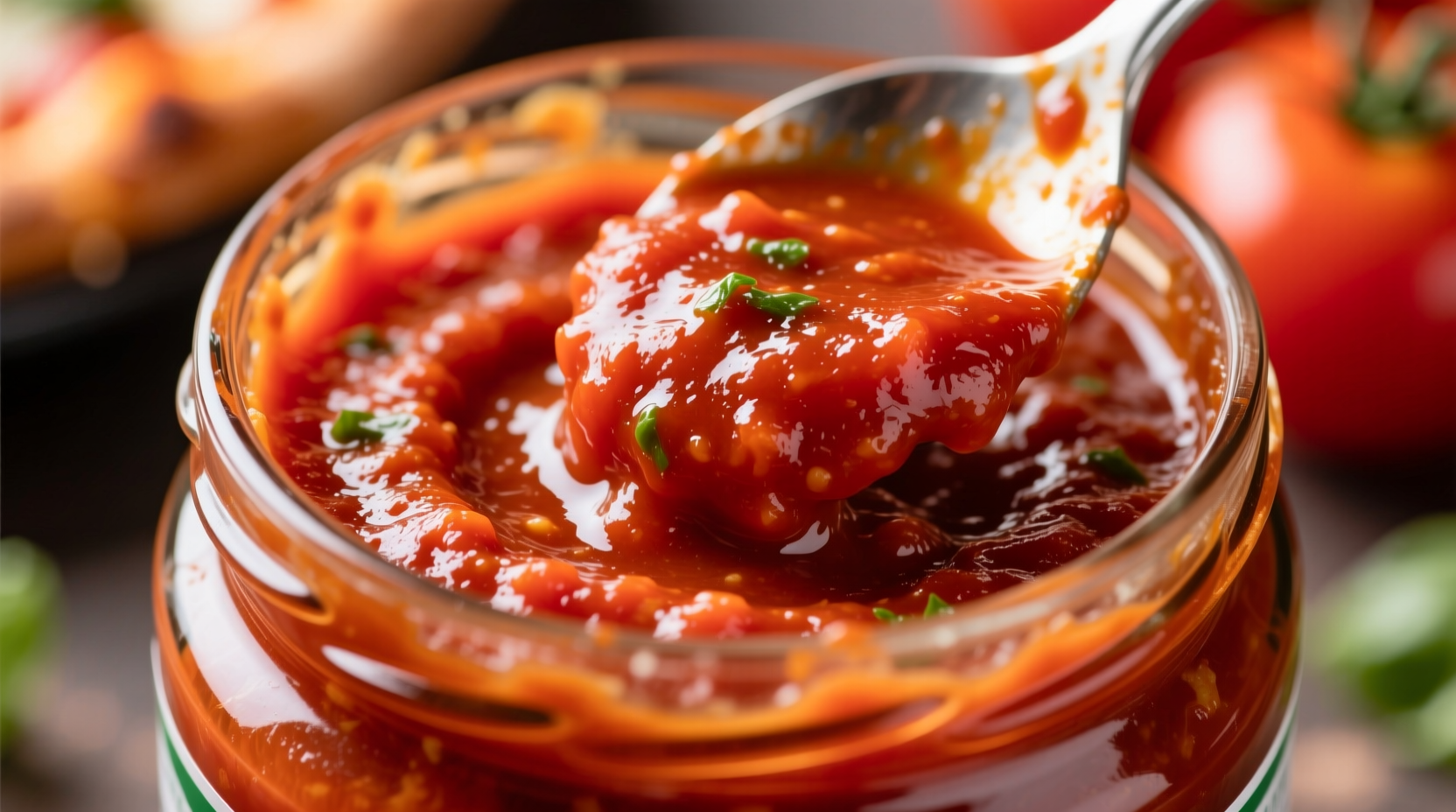Ever wondered why your homemade marinara lacks that restaurant-quality depth? The secret often lies in properly using tomato paste. This concentrated ingredient isn't just for Italian cooking—it's a global kitchen essential that transforms ordinary dishes into extraordinary meals through its intense flavor and thickening power.
Understanding Tomato Paste: More Than Just Concentrated Tomatoes
Tomato paste undergoes a specialized cooking process where tomatoes are simmered for hours to evaporate moisture, resulting in a product with about 24-30% solids content—nearly triple that of tomato sauce. This concentration creates a flavor powerhouse rich in glutamates that trigger umami, the fifth taste sensation responsible for savory depth in dishes.
Why Professional Chefs Always Start With Tomato Paste
When building flavor foundations, professional cooks don't just add tomato paste—they bloom it. This technique involves cooking the paste in oil for 3-5 minutes until it darkens slightly and develops nutty aromas. This Maillard reaction creates hundreds of new flavor compounds that can't be achieved by simply stirring paste into liquid.
| Tomato Product | Solids Content | Primary Culinary Use | Flavor Development Time |
|---|---|---|---|
| Tomato Paste | 24-30% | Flavor foundation, thickening | 3-5 minutes blooming |
| Tomato Sauce | 8-12% | Base for soups, stews | 15-20 minutes reduction |
| Tomato Puree | 10-12% | Quick sauces, pizza bases | 5-10 minutes cooking |
| Canned Tomatoes | 5-8% | Chunky sauces, stews | 20-30 minutes simmering |
Essential Culinary Applications of Tomato Paste
Building Flavor Foundations
Before adding liquids to your sauces or soups, cook 1-2 tablespoons of tomato paste with your aromatics (onions, garlic, carrots) until it darkens. This technique, called sofrito in Italian cooking or mirepoix in French cuisine, creates a flavor base that permeates the entire dish. The natural sugars in tomato paste caramelize, developing complex notes that balance acidity in tomato-based dishes.
Thickening Without Altering Flavor
Unlike flour or cornstarch, tomato paste thickens while contributing flavor. Add 1 tablespoon per cup of liquid to soups, stews, or gravies for subtle thickening with rich tomato essence. Unlike tomato sauce, it won't water down your dish while providing body.
Enhancing Meat Dishes
When browning ground meat for tacos, meatloaf, or burgers, add 1 tablespoon of tomato paste during the last minute of cooking. It caramelizes on the meat surface, creating fond (those browned bits) that forms the flavor foundation when you deglaze the pan with broth or wine.
Perfect Pizza and Pasta Sauces
For restaurant-quality pizza sauce, mix 2 parts tomato paste with 1 part water and seasonings. The concentrated paste creates a sauce that won't make your pizza soggy while delivering intense tomato flavor. In pasta sauces, bloomed tomato paste balances the acidity of fresh tomatoes.
Global Flavor Booster
Tomato paste appears in unexpected international dishes:
- North African tagines (adds depth to spice blends)
- Indian curries (balances coconut milk richness)
- Middle Eastern stews (enhances lamb dishes)
- Mexican mole (contributes to complex flavor layers)
Tomato Paste Through History: A Culinary Timeline
The journey of tomato paste from novelty to kitchen staple reveals why it became indispensable:
- 1800s: First commercially produced in Italy as a preservation method when fresh tomatoes were scarce
- 1870s: American canner Joseph A. Campbell develops shelf-stable tomato paste, revolutionizing food preservation
- 1920s: French chefs adopt tomato paste as a flavor foundation in classic sauces
- 1950s: Post-WWII food processing advances make tomato paste affordable worldwide
- Today: Essential ingredient in 92% of professional restaurant kitchens according to Culinary Institute of America surveys
Pro Tips for Maximizing Tomato Paste
Storage Hack: Freeze leftover paste in tablespoon portions using an ice cube tray, then transfer to airtight containers. Properly frozen, it maintains quality for 6 months.
Flavor Boost: Add a pinch of baking soda when blooming paste—it neutralizes acidity while preserving bright tomato flavor.
Dish Rescue: Salvage overly acidic sauces by stirring in 1 teaspoon of tomato paste per cup of sauce and simmering 5 minutes.

Common Mistakes to Avoid
Many home cooks make these critical errors:
- Adding paste directly to liquids—always bloom it first in oil
- Using expired paste—check for darkening or metallic smell
- Substituting sauce for paste—they serve different culinary functions
- Over-reducing sauces—paste continues to concentrate as it cooks
When Tomato Paste Isn't the Right Choice
While versatile, tomato paste has limitations:
- Avoid in fresh salsas where bright, acidic tomato flavor is desired
- Don't use in cold dishes like gazpacho where cooked flavor would be jarring
- Not suitable for dishes requiring distinct tomato chunks
- Excessive use can overpower delicate seafood dishes
Conclusion: Mastering This Kitchen Essential
Understanding what tomato paste is used for transforms your cooking from ordinary to exceptional. By properly blooming this concentrated ingredient, you unlock complex flavors that elevate everything from weeknight dinners to special occasion meals. Keep a tube in your pantry and master these techniques to cook with the confidence of a professional chef.











 浙公网安备
33010002000092号
浙公网安备
33010002000092号 浙B2-20120091-4
浙B2-20120091-4